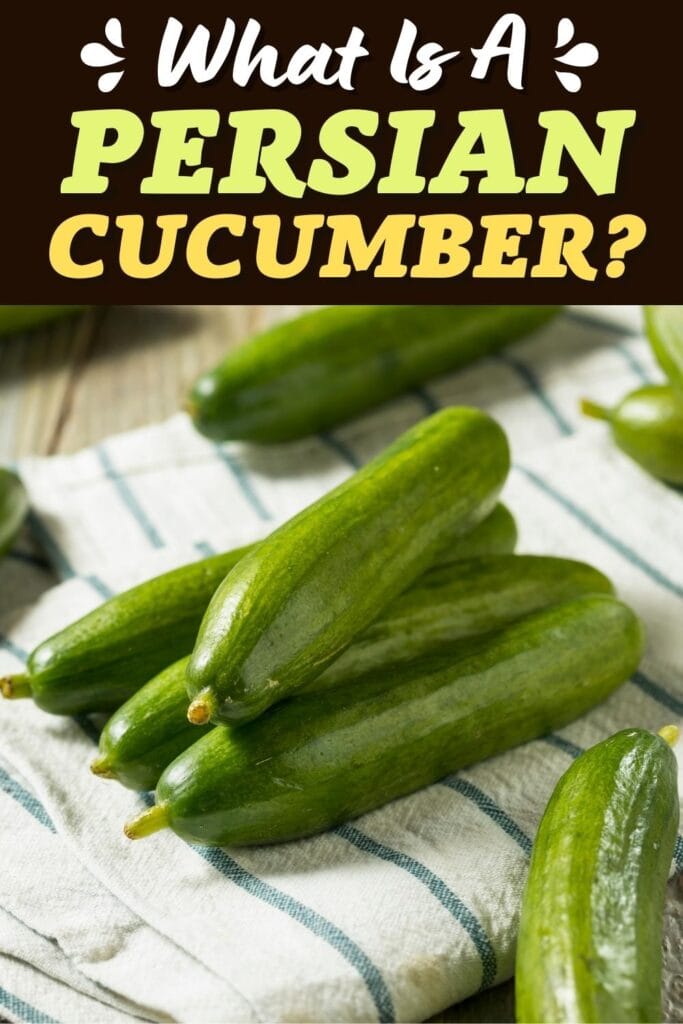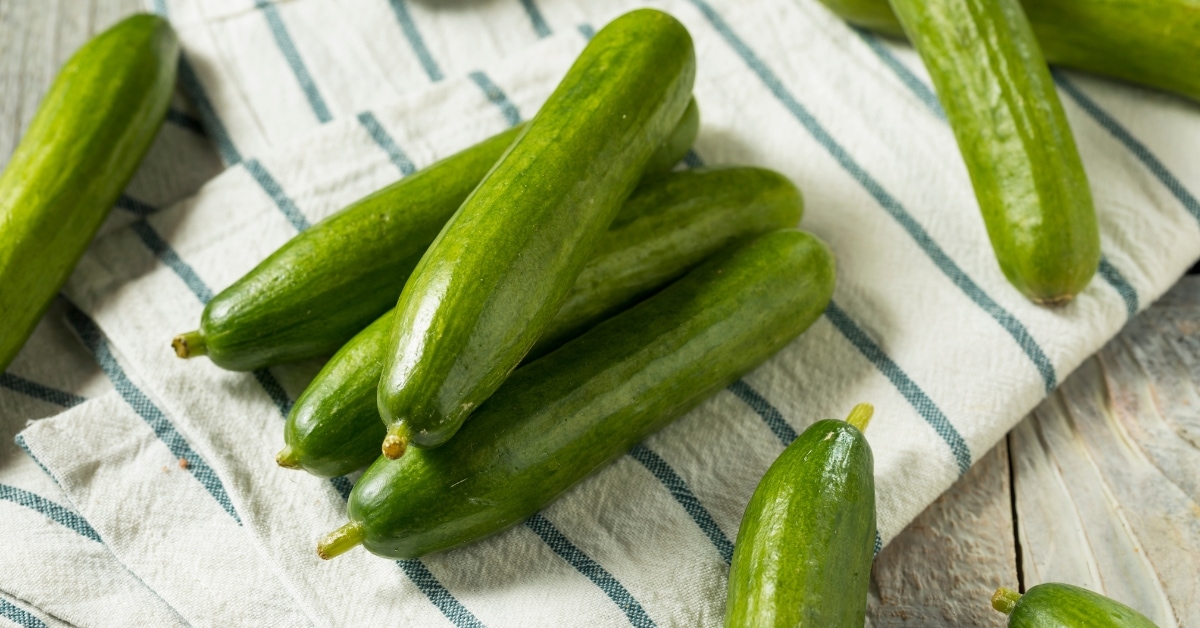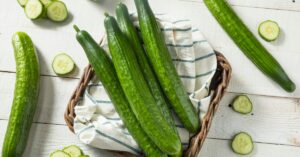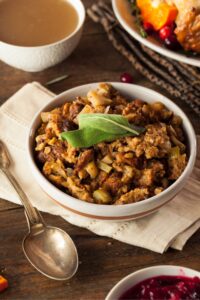Ever found yourself in the produce aisle wondering, “What is a Persian cucumber?”
Me too! So I decided to find out what makes this type of cucumber so special.
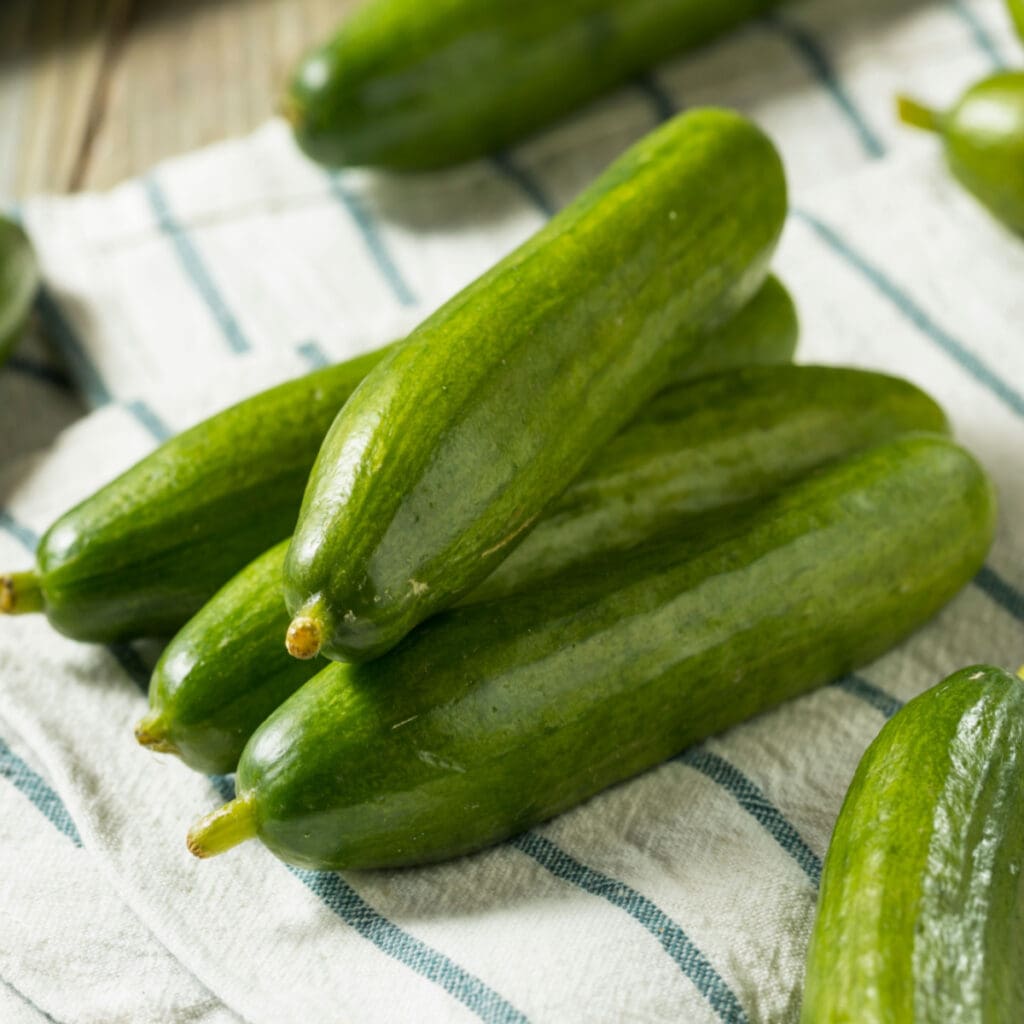
Persian cucumbers are crisp, refreshing, and have a subtle sweetness that makes them so addictive.
Plus, there’s no need to peel them. Just give them a rinse, and they’re ready to eat.
They’re great for adding an extra crunch to salads or layering them in sandwiches.
And let’s not forget about their superb dipping capabilities! There’s no better way to eat hummus and tzatziki.
What Is a Persian Cucumber?
Persian cucumbers are small, thin-skinned, and virtually seedless members of the cucumber family.
They’re typically 4-7 inches long and have slightly bumpy, dark green skin.
Persian cucumbers are known for their crisp, sweet taste thin skin, and almost seedless insides.
This makes them super easy to eat. There’s no need for peeling or dealing with pesky seeds!
As you might have guessed, Persian cucumbers got their name from their origin in Persia.
Now known as modern-day Iran, these cucumbers have been cultivated for thousands of years.
They’re now grown all around the world and have become a major ingredient in many recipes and cuisines.

Persian Cucumbers vs. English Cucumbers (What’s the Difference?)
If you’ve ever wondered about the differences between Persian cucumbers and their more common English counterparts, look no further.
Persian cucumbers are smaller in size, typically around 4-7 inches long, making them perfect for single servings and snacking.
English cucumbers, however, can grow up to 14 inches long.
The skin of Persian cucumbers is also thinner and slightly bumpy, unlike the smoother, thicker skin of English cucumbers.
This means there’s no need to peel Persian cucumbers, as the skin is completely edible. It even provides a delightful crunch!
Another key difference is the seed content.
Persian cucumbers are virtually seedless, while English cucumbers have more noticeable seeds.
Overall, Persian cucumbers are known for their sweeter, more flavorful taste.
So, they’re a more popular choice for salads, sandwiches, and snacks.
Where to Buy Persian Cucumbers
As Persian cucumbers continue to grow in popularity, you might be wondering where you can find these delightful veggies.
No worries, as there are several options to help you get started on your Persian cucumber journey.
Your local farmers market is a great place to start, as you can often find fresh, locally-grown Persian cucumbers in season.
Additionally, many large grocery store chains and specialty food stores now carry Persian cucumbers in their produce sections.
They’re usually found near other cucumber varieties.
Still having trouble finding them?
Online retailers specializing in fresh produce delivery often have Persian cucumbers as part of their selection.
And if you’re feeling particularly adventurous and have a green thumb, why not grow your own?
You can easily find seeds and seedlings at garden centers and online seed suppliers.
Then, you can cultivate Persian cucumbers in your garden or even in pots on your patio.
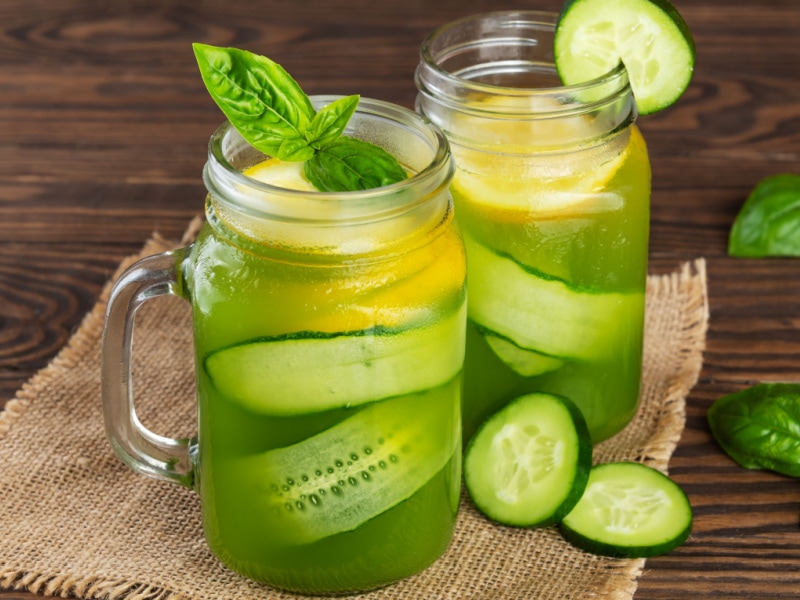
How to Eat Persian Cucumbers
There are many ways to enjoy these delicious cucumbers, but here are a few ideas to get you started:
- Raw: Persian cucumbers are perfect for snacking right out of the fridge. Just give them a rinse, and you’re good to go.
- Salads: Chop up some Persian cucumbers and toss them into your favorite salad for a burst of refreshing crunchiness.
- Pickles: Transform Persian cucumbers into pickles by marinating them in a mixture of vinegar, sugar, and spices.
- Sandwiches: Add slices of Persian cucumber to your favorite sandwich for a delightful, crisp addition.
- Dips: Persian cucumbers are great for dipping. Slice them into sticks or rounds and serve them with hummus, tzatziki, or your favorite dip.
- Cold Soups: Blend Persian cucumbers with yogurt, dill, and garlic to make a refreshing cold soup, like the traditional Persian dish called ‘Ab Doogh Khiar.’
- Sushi rolls: Thinly slice Persian cucumbers and use them as a crunchy, refreshing ingredient in your homemade sushi rolls.
- Cucumber-infused water: Add sliced Persian cucumbers to a pitcher of water for a refreshing, hydrating twist on your everyday drink.
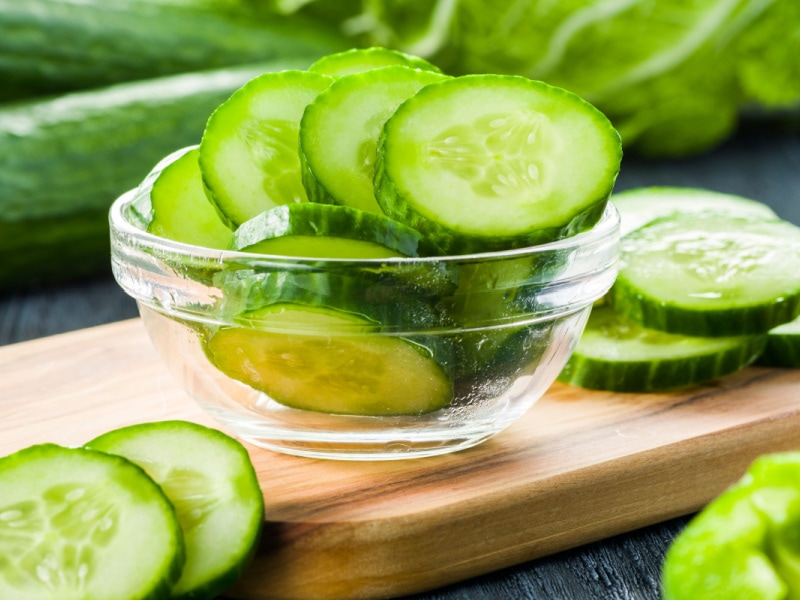
How to Store Persian Cucumbers
Persian cucumbers come with a tiny hiccup.
They don’t stay fresh quite as long as other cucumbers in the fridge and can get a bit slimy.
Luckily, there are a few simple tips to ensure they stay fresh and delicious.
First, it’s important to wait until you’re ready to use them before washing them. This helps prevent mold and bacteria growth.
Be sure to store your cucumbers in a dry environment to avoid excess moisture, which can cause spoilage.
The crisper drawer in your refrigerator is designed for optimal produce storage.
So, placing your Persian cucumbers in a plastic bag or wrapping them in a paper towel and storing them in the crisper drawer is ideal.
And, for the best flavor and texture, aim to use your Persian cucumbers within a week of purchasing or harvesting them.
